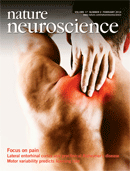- Submit a Protocol
- Receive Our Alerts
- Log in
- /
- Sign up
- My Bio Page
- Edit My Profile
- Change Password
- Log Out
- EN
- EN - English
- CN - 中文
- Protocols
- Articles and Issues
- For Authors
- About
- Become a Reviewer
- EN - English
- CN - 中文
- Home
- Protocols
- Articles and Issues
- For Authors
- About
- Become a Reviewer
Two-choice Digging Task in Mouse for Studying the Cognitive Flexibility
Published: Vol 4, Iss 19, Oct 5, 2014 DOI: 10.21769/BioProtoc.1250 Views: 13358
Reviewed by: Soyun KimYatang LiAnonymous reviewer(s)

Protocol Collections
Comprehensive collections of detailed, peer-reviewed protocols focusing on specific topics
Related protocols
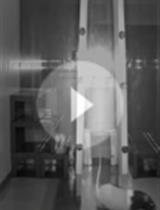
Protocol for Measuring Free (Low-stress) Exploration in Rats
Wojciech Pisula and Klaudia Modlinska
Jan 20, 2020 4390 Views
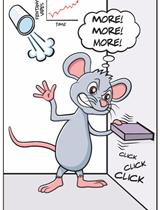
Operant Vapor Self-administration in Mice
Renata C. N. Marchette [...] Khaled Moussawi
May 20, 2021 4473 Views
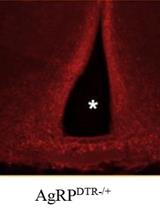
Construction of Activity-based Anorexia Mouse Models
Maria Consolata Miletta and Tamas L. Horvath
Aug 5, 2023 1713 Views
Abstract
Cognitive flexibility, the higher-order cognition involving reversal learning, has been defined as having the ability to shift one’s previous thoughts or actions to new situations depending on situational demands. Studies of neuropsychiatric disorders such as autism spectrum disorder (ASD) showed that restricted and repetitive patterns of activities are associated with the impairments of cognitive flexibility. Some behavioral tasks including attentional set-shifting task are used to assess cognitive flexibility in mouse models for psychiatric disorders (Birrell and Brown, 2000; Colacicco et al., 2002). Here we present a two-choice digging test, which is simplified and modified from set-shifting task, for using mice to study the reversal learning (Huang et al., 2014).
Keywords: Mouse behaviorMaterials and Reagents
- C57BL/6 mice (purchased from National Laboratory Animal Center)
- Sterilized sunflower seeds (SunOpta, catalog number: 10AF4167 )
- Cinnamon (Local bakery shop)
- Sawdust (P.J. Murphy Forest Products Corporation, Sani-Chips®)
- 70% ethanol
Equipment
- Apparatus
The apparatus (Figure 1) is made of opaque acrylic with a platform base and wall with two transparent plexiglas guillotine doors (25 x 20 x 15 cm). A waiting compartment (20 x 10 cm) at one end of the apparatus connected to two equally sized choice compartments at the other end via guillotine doors (15 x 10 cm).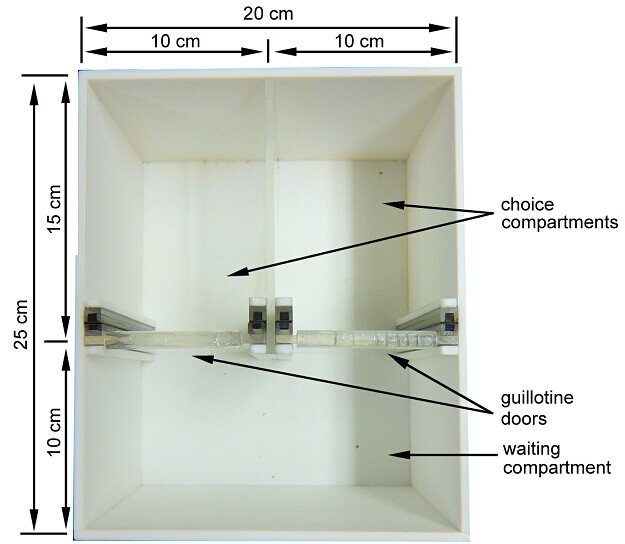
Figure 1. The apparatus of two-choice digging task - Digging bowl
The digging bowl (45 mm in diameter, 25 mm in height) placed in each choice compartment is baited with sunflower seeds (30-35 mg) hidden underneath original- or cinnamon (2%)-flavored sawdust.
Note: The rewards should be buried under over 20 mm of sawdust.
Figure 2. The digging bowl
Software
The GraphPad Prism 5.0 (GraphPad Software) was used to generate the graphs and analyze the data of trials to acquisition and trials to relearn. A p-value less than 0.05 is considered statistically significant.
Procedure
Notes:
- The procedure used in this task is modified from the procedure described for investigating the attentional set-shifting in mice (Colacicco et al., 2002, Garner et al., 2006).
- In general, this two-choice digging test consists of a 3-day habituation period, 1-day learning period, and 1-day reversal learning period.
- Before starting the task and then throughout the entire experiment, mice are housed individually in their home cages and are food-restricted (1.5-2 g per day) to reduce their body weight to 85-90% of the free-feeding body weight.
- 3-day habituation period
In order to ensure that the subject mice dig for rewards of sunflower seeds in digging bowls placed in each reward chamber, the mice must be habituated to the baited bowls filled with original- or cinnamon-flavored sawdust. To do this, mice are deprived of food for 22 h and then allowed to daily access to wet mashed food for 2 h every day. Following feeding, a digging bowl filled with sawdust and baited with sunflower seeds is left in their home cage overnight, so that mice could be trained to habituate the experimental tools and learn to retrieve the reward by digging in the bowl. The following steps are taken for this period.- Day 1
- After the 22-h food deprivation, feed the mouse daily mashed and moisture food (1.5-2 g) for 2 h.
- After mice consumed moisture food, place a digging bowl baited with sunflower seeds (30-35 mg) hidden underneath original-flavored sawdust into home cage overnight and resume the 22-h food deprivation.
- After the 22-h food deprivation, feed the mouse daily mashed and moisture food (1.5-2 g) for 2 h.
- Day 2 (Video 1)
- Mice are placed into the waiting compartment.
- Once the mouse is not facing or touching a door, both guillotine doors are lifted simultaneously to allow the mouse to explore the test box freely for 10 min.
- After 10 min has expired, return mouse back to the waiting chamber and lower the doors immediately. Meanwhile, place an original sawdust-filled baited bowl in each choice compartment simultaneously.
- Reopen both doors, mice are then given two consecutive trials with unlimited free access to both baited bowls in the testing apparatus until both rewards are found. Once mice retrieve a reward, they are allowed to consume it before being returned to the waiting compartment.
- As the trials are complete, return mice to their home cages. Feed mice with the wet mashed food (1.5-2 g) for 2 h.
- After 2 h has elapsed, place a 2% cinnamon-flavored sawdust-filled baited bowl into the home cages overnight and resume the 22-h food deprivation.
Note: The 2% cinnamon-flavored sawdust could be prepared by evenly mixing the sawdust and cinnamon in the ziplock bag. During the preparation, change gloves after weighting out or touching cinnamon to avoid the cross contamination between original- and cinnamon-flavored sawdust.Video 1. Two-choice digging-Day 2-Habituation period
- Mice are placed into the waiting compartment.
- Day 3: Almost the same as day 2 except that the original sawdust-filled baited bowls are replaced by 2% cinnamon-flavored sawdust-filled baited bowls in the choice chambers.
- After the 22-h food deprivation, place mice into the waiting compartment, followed by 10 min of free exploration for the test box.
- Immediately after exploration, mice are given two consecutive trials to freely access two 2% cinnamon-flavored sawdust-filled baited bowls positioned in choice compartments until both rewards are retrieved and consumed.
- Return mice to home cage and feed them with restricted food. After one hour feeding, place original sawdust-filled baited bowls into their cage overnight and resume the food deprivation. After three days of habituation, mice should be trained to accustom to the task structure and find food rewards by digging in the food bowls rapidly.
- After the 22-h food deprivation, place mice into the waiting compartment, followed by 10 min of free exploration for the test box.
- Day 1
- 1-day learning period
In this period, mice are trained to learn that the bowl filled with original-flavored sawdust is baited (correct) and 2% cinnamon-flavored sawdust is unbaited (incorrect). This learning test consists of training trials (first four trials) and testing trials (from trial 5 onwards).- Day 4 (Video 2)Video 2. Two-choice digging-Day 4-learning period
- Place the digging bowls in choice compartments: One is original sawdust-filled baited; the other is cinnamon-flavored sawdust-filled unbaited.
Note: The baited and unbaited bowls are positioned randomly in each of choice compartments (left versus right). For each mouse, the baited bowl should be presented at the left and right hands simultaneously to prevent spatially cueing the mouse as to which bowl is baited. Throughout this period, baited bowls should not be presented in the same choice compartment more than three times in a row. - After food deprivation, place mice in the waiting compartment and then open the guillotine doors simultaneously to begin the training trials.
- In the training trials, mice are received first four trials, in which they are allowed to freely dig in both bowls. If the first dig occurred in the baited bowl, mice are allowed to retrieve and consume the rewards and then dig in the other unbaited bowl. If the first dig occurred in the unbaited bowl, an incorrect choice is recorded and mice are still allowed to retrieve the reward from the other baited bowl.
Note: Only moving the sawdust from bowls with paws or nose can be defined as the digging response. The simply contacting or sniffing the sawdust or bowl performed by mice can’t be recognized as the digging choice. - After one training trial is complete, mice are returned to the waiting compartment and place to their home cage waiting for the next trial. Meanwhile, clean the base, wall, and doors of the apparatus thoroughly with ethanol to ensure that no odor remains (ethanol should to be used to clean this apparatus carefully between all trials).
Note: No more than four mice are tested as a group in this task to avoid waiting too long for the next trial. - After four training trials are complete, mice are subjected to testing trials from trial 5 onwards, in which mice are allowed to dig in one bowl only. If mice first dig in the original odor sawdust-filled baited bowl (correct), they are allowed to consume the reward. The trial is terminated and the mouse is returned to the waiting compartment after digging when the mouse starts to dig in the cinnamon odor sawdust-filled unbaited bowl (incorrect). Once one testing trial is complete, the mouse will be returned to his cage, waiting for the next trial.
Note: If no choice is made 5 min after trial beginning, the trial is terminated and marked as incomplete. - The bowl that the mouse chooses to first dig in (correct/incorrect) is recorded. The testing trial is repeated for many times. Once the mouse meets a criterion level of six consecutive correct trials, the testing is ended. The number of trials needed to reach the criterion is recorded.
- After the testing trials is complete, return the mouse to its home cage and give mouse the restricted chow pellets (1.5-2 g) overnight.
- Place the digging bowls in choice compartments: One is original sawdust-filled baited; the other is cinnamon-flavored sawdust-filled unbaited.
- Day 4 (Video 2)
- 1-day reversal learning period
On the next day, mice are subjected to the reversal learning period, in which the reward is switched to the bowl filled with 2% cinnamon-flavored sawdust. Mice are again first given training trials (first four trials) to relearn that the cinnamon odor sawdust-filled bowl is the correct one and then allowed to immediately choose one bowl only to test their cognitive flexibility in the testing trials (from trial 5 onwards).- Day 5: Same as day 4 (the learning period) except that the reward is buried under the 2% cinnamon odor sawdust, meaning the bowl filled with 2% cinnamon-flavored sawdust is baited (correct) and the bowl filled with original-flavored sawdust is unbaited (incorrect).
- Place the bowls, one is cinnamon odor (baited/correct) and the other is original odor (unbaited/incorrect), in the choice compartments.
- In the first four trials (training trials), mice are allowed to dig in both baited and unbaited bowls.
- After training, the testing trials are begun from trial 5 onwards, in which mice are allowed to dig in one bowl only.
- Testing is terminated once mouse reaches the criterion of six consecutive correct trials. Record the number of trials needed to meet the criterion.
- Place the bowls, one is cinnamon odor (baited/correct) and the other is original odor (unbaited/incorrect), in the choice compartments.
- Day 5: Same as day 4 (the learning period) except that the reward is buried under the 2% cinnamon odor sawdust, meaning the bowl filled with 2% cinnamon-flavored sawdust is baited (correct) and the bowl filled with original-flavored sawdust is unbaited (incorrect).
- 3-day habituation period
Recipes
- Flavored sawdust
2% cinnamon
Acknowledgments
This protocol was adapted from previous works listed in the references.
References
- Birrell, J. M. and Brown, V. J. (2000). Medial frontal cortex mediates perceptual attentional set shifting in the rat. J Neurosci 20(11): 4320-4324.
- Colacicco, G., Welzl, H., Lipp, H. P. and Wurbel, H. (2002). Attentional set-shifting in mice: modification of a rat paradigm, and evidence for strain-dependent variation. Behav Brain Res 132(1): 95-102.
- Garner, J. P., Thogerson, C. M., Würbel, H., Murray, J. D. and Mench, J. A. (2006). Animal neuropsychology: validation of the Intra-Dimensional Extra-Dimensional set shifting task for mice. Behav Brain Res 173(1): 53-61.
- Huang, T. N., Chuang, H. C., Chou, W. H., Chen, C. Y., Wang, H. F., Chou, S. J. and Hsueh, Y. P. (2014). Tbr1 haploinsufficiency impairs amygdalar axonal projections and results in cognitive abnormality. Nat Neurosci 17(2): 240-247.
Article Information
Copyright
© 2014 The Authors; exclusive licensee Bio-protocol LLC.
How to cite
Chuang, H., Huang, T. and Hsueh, Y. (2014). Two-choice Digging Task in Mouse for Studying the Cognitive Flexibility. Bio-protocol 4(19): e1250. DOI: 10.21769/BioProtoc.1250.
Category
Neuroscience > Behavioral neuroscience > Cognition
Neuroscience > Behavioral neuroscience > Animal model > Mouse
Do you have any questions about this protocol?
Post your question to gather feedback from the community. We will also invite the authors of this article to respond.
Share
Bluesky
X
Copy link


